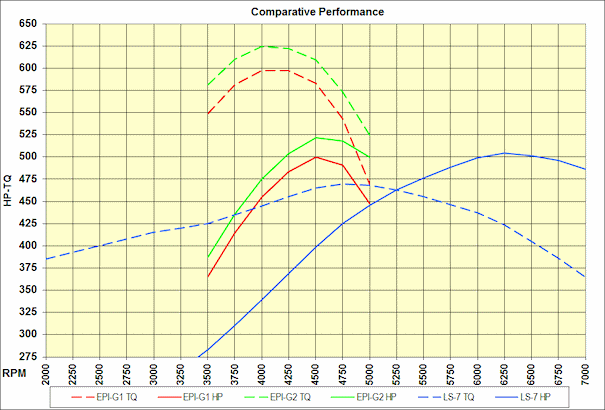- EPI Gen-2 Aircraft V8 Engine -
Performance, Features, Options
NOTE: All our Products, Designs and Services are SUSTAINABLE, ORGANIC, GLUTEN-FREE, CONTAIN NO GMO's, and will not upset anyone's precious FEELINGS or delicate SENSIBILITIES.
NOTE: WE ARE NO LONGER PRODUCING ANY V-8 CONVERSION ENGINE PACKAGES, MAINLY BECAUSE OF OUR COMPLETE FOCUS ON THE NEW
CLEAN-SHEET V12 POWERPLANT. ALSO, THE LS BLOCK IN 4.125 INCH BORE SIZE PROVED TO BE PROBLEMATIC AT CONTINUOUS HIGH LOAD REGARDING
CYLINDER WALL STABILITY AND ROUNDNESS, AND THE 4.125 INCH STROKE CRANKSHAFT WAS PROBLEMATIC REGARDING STIFFNESS AND STRENGTH.
I AM LEAVING THIS PAGE ON THE SITE FOR INFORMATIONAL PURPOSES ONLY.
Building on the success of the Gen-1 engine, we developed the Gen-2 engine, which includes the new Mark-15 PSRU.
When the Gen-2 engine program began, the design was based on the same bottom-end technology as the Gen-1 engine (that is, improved SBC architecture), and the planned increase in performance resulted from a proprietary EPI cylinder head design and from several internal improvements.
The fact that the newer GM "LS" engine family incorporates most of the improved cylinder head technology which our proprietary SBC-style head design contained, combined with (a) improved engine block technology, available at much lower costs than custom components, and (b) the availability of high-quality LS aftermarket components, persuaded us switch the Gen-2 program to an LS-based engine. That allows us to further increase reliability, reduce weight and reduce cost.
The resulting Gen-2 engine is a normally-aspirated 441-cubic inch (7.3 L) engine based on LS architecture and built using the highest quality aftermarket and custom-designed components.
The following graph compares the expected performance of the EPI Gen-2 normally-aspirated 520-HP, 441-cubic inch (green) to the power and torque curves for the highly-optimized 500 HP 427-CI EPI Gen-1 engine (red) and the stock LS-7 (427-CI) engine (blue). The Gen-1 and Gen-2 curves illustrate the fact that with a well-optimized engine package, there is no point in using excessive crankshaft speeds.

As shown by the green curves above, the 520-HP (441-CI) EPI Gen-2 engine has been tailored specifically for aircraft applications. The LS cylinder head design has an excellent combustion chamber design, port configuration and symmetric port layout for good, even cooling. EPI has optimized the ports and valvetrain to produce a high but narrow torque peak in a good aircraft-engine operating range between 2670 and 3050 fpm mean piston speed (4000-4500 RPM).
The development of the Gen-2 engine was slowed by the fact that there was no intake manifold available for that engine family which is properly configured to produce the high, narrow torque curve of the Gen-1 engine. Therefore, we designed an LS-architecture intake manifold which enables the engine to produce optimized power and torque curves like the Gen-1 engine.
Because the operating range of the engine is limited by design to 4500 RPM, the valvetrain loads can be reduced considerably, leading to improved engine life expectation. Since the acceleration loads on cam followers increase with the square of RPM (with respect to the same cam profile and valvetrain components), the needle bearings in the roller cam followers are notorious for failing under sustained high speed operation. Our tailored valvetrain has modest cam-lobe acceleration values, lighter spring loads, and components designed to move their resonant frequencies as far away as possible from strong excitation frequencies and harmonics.
The Gen-2 powerplant program was discontinued because testing revealed insufficient torsional and bending stiffness in the custom 4.125" stroke center-counterweighted crankshaft it used.
Our V-8 aircraft engines are no longer available because of our current focus on new, "clean-sheet" engine designs.

